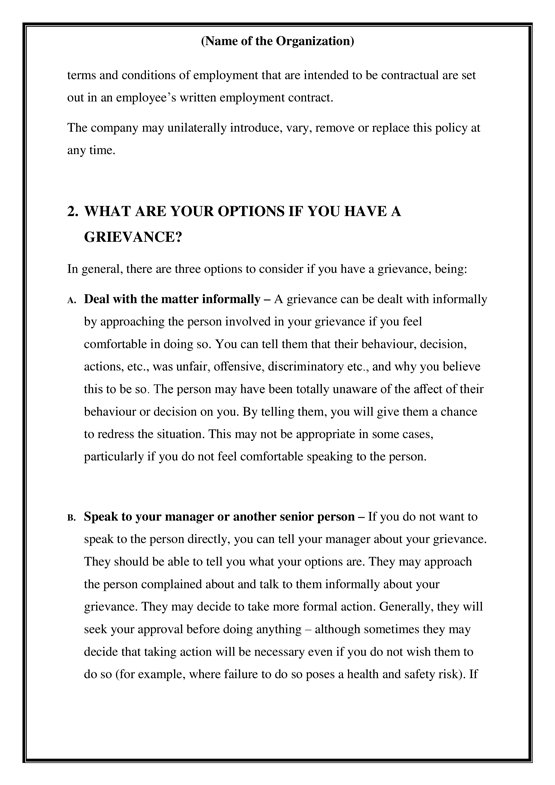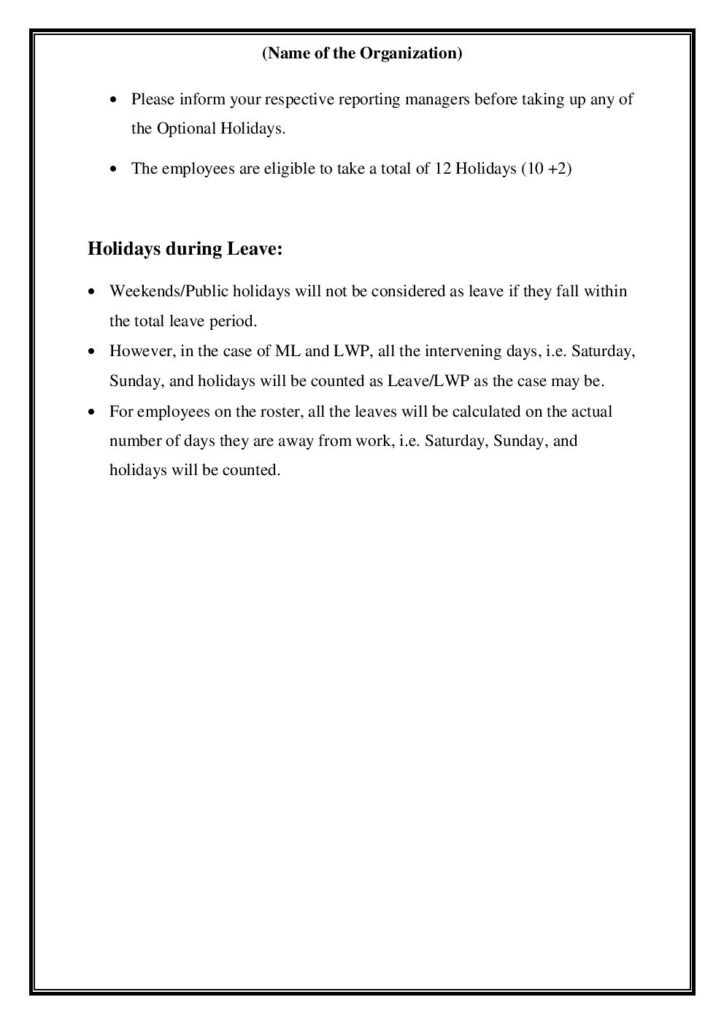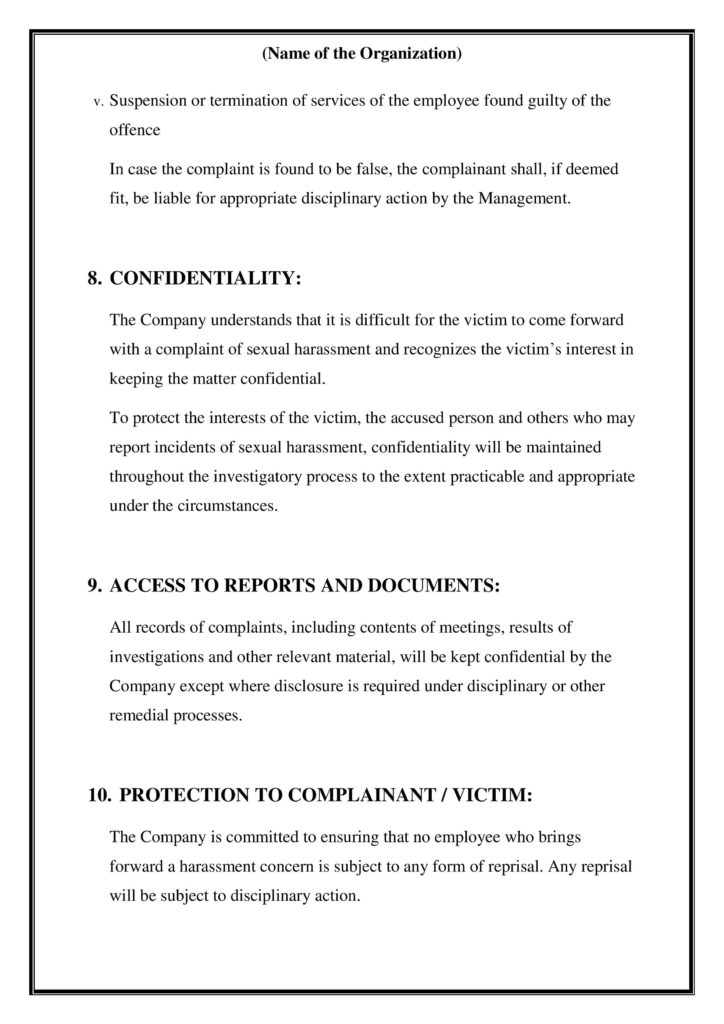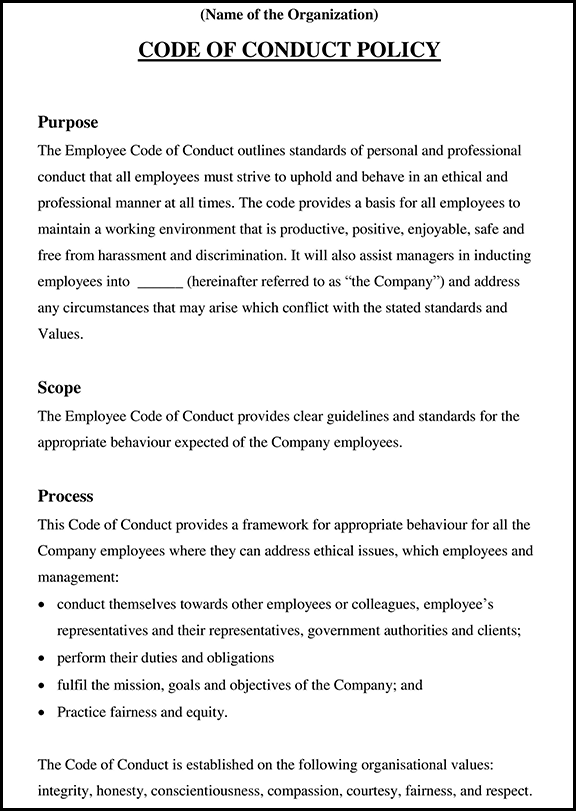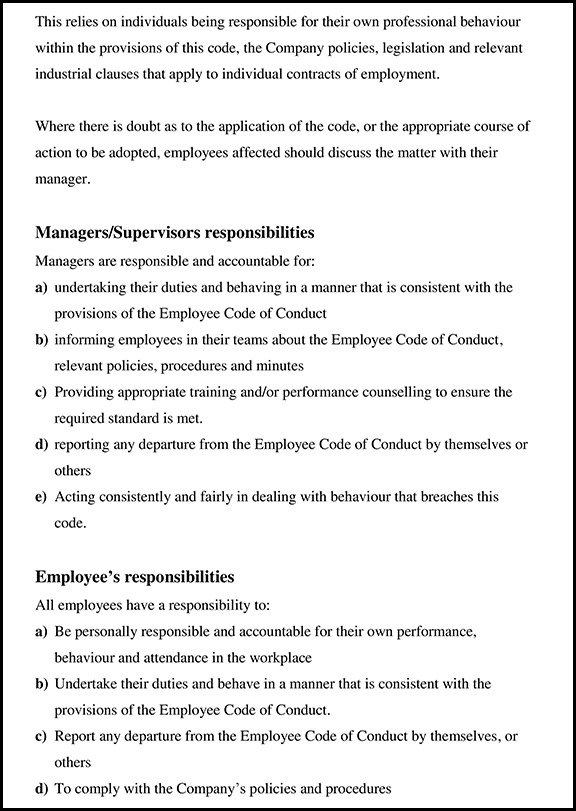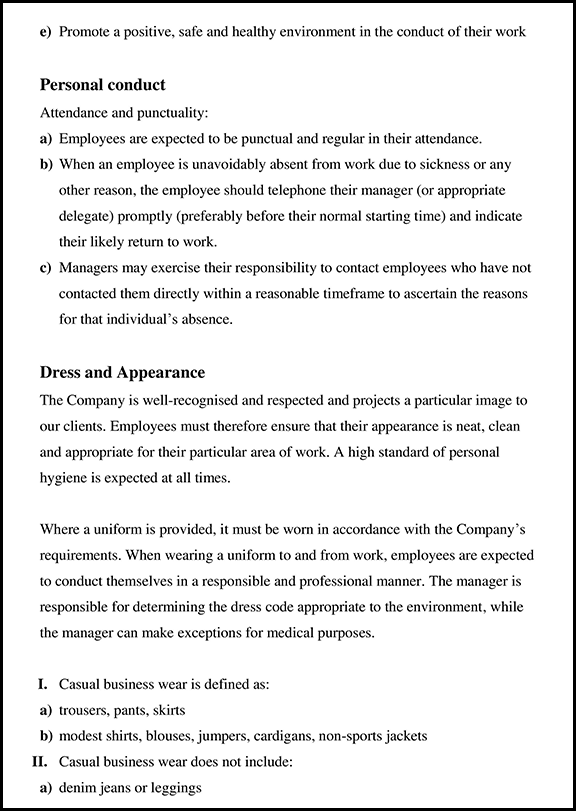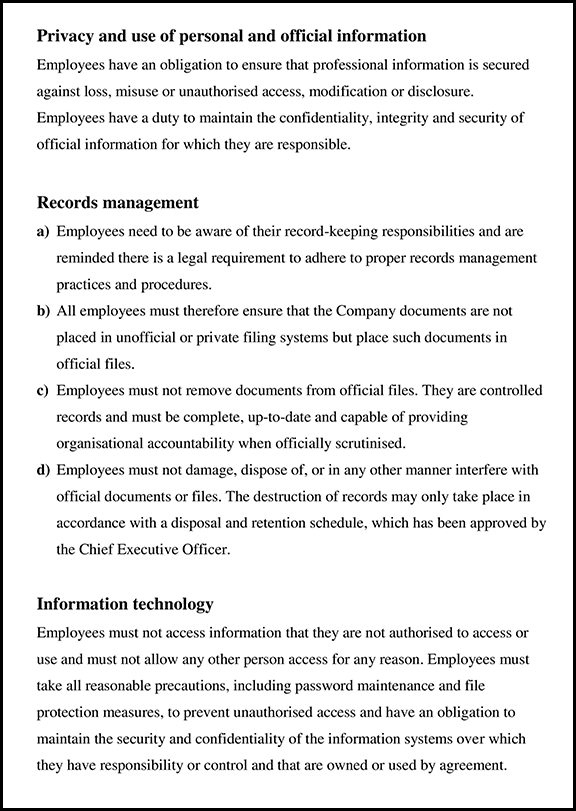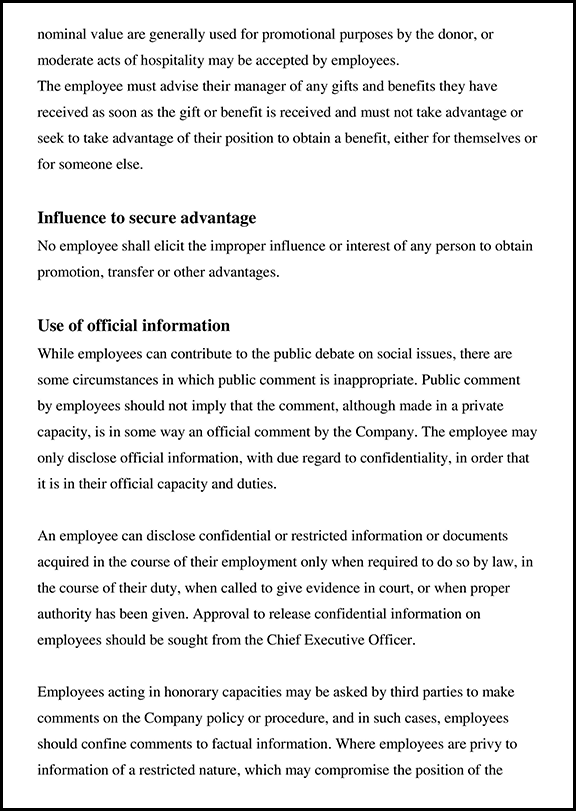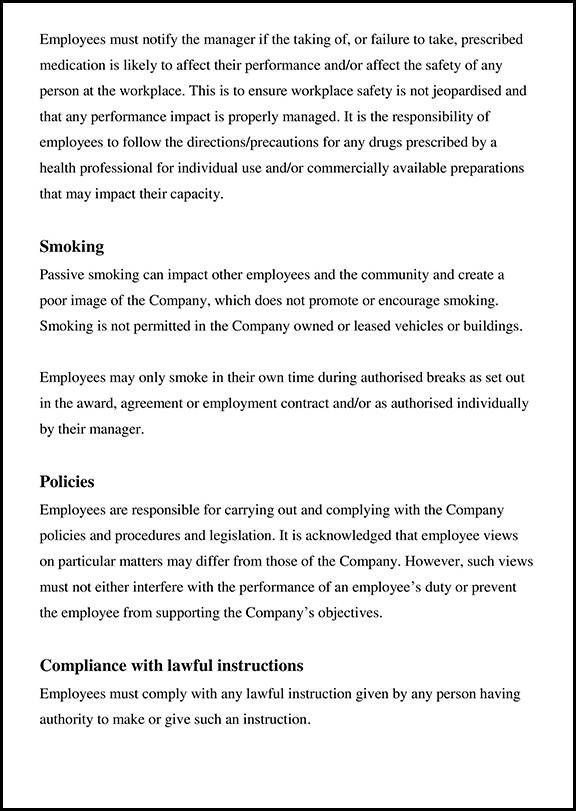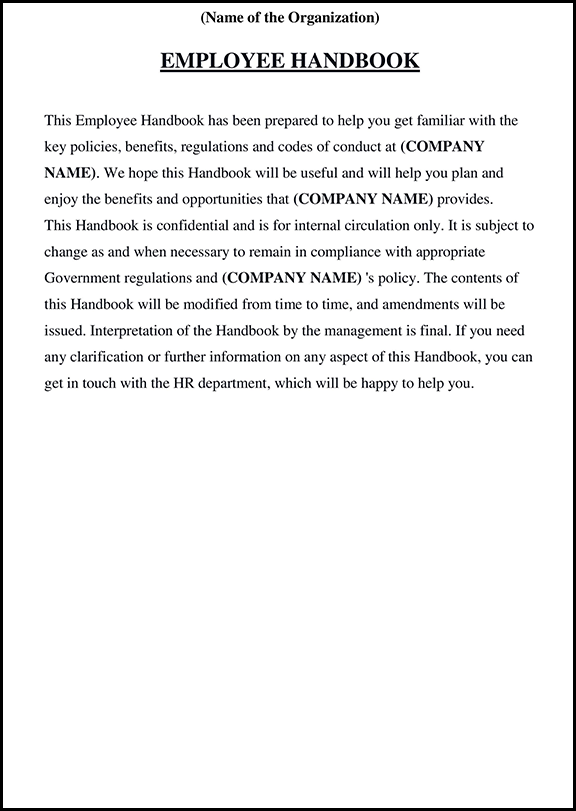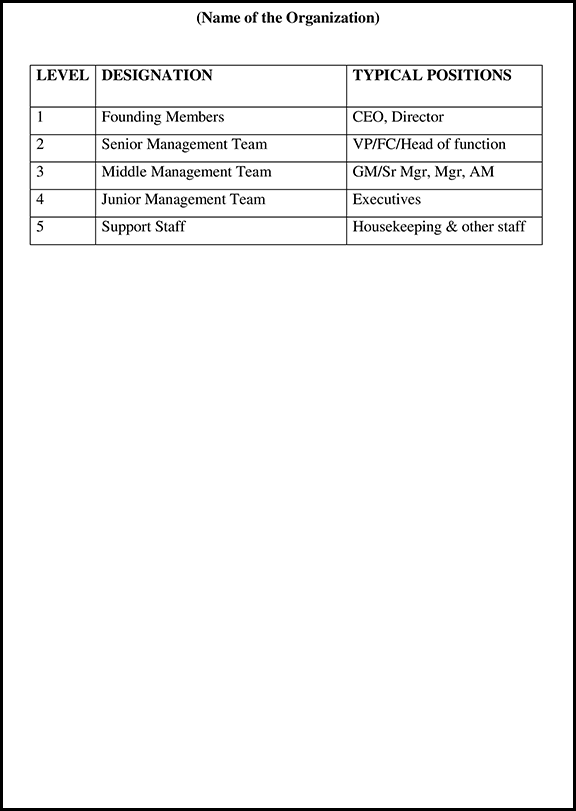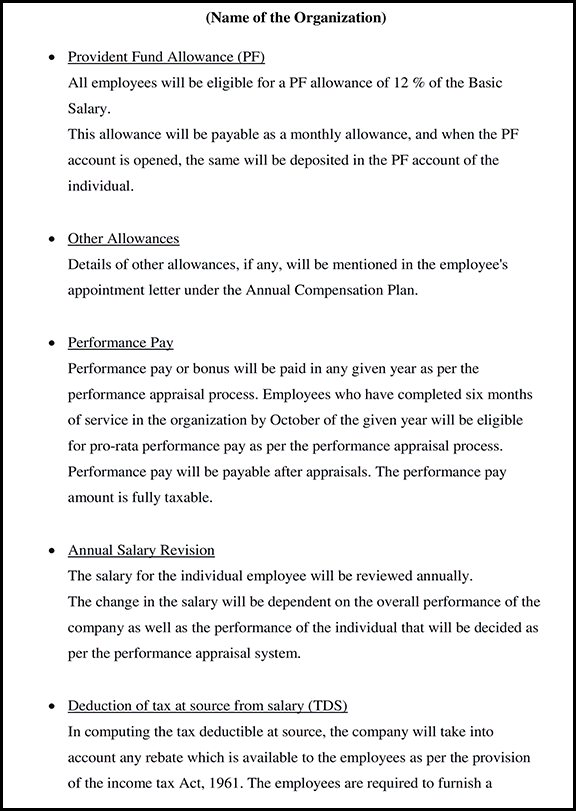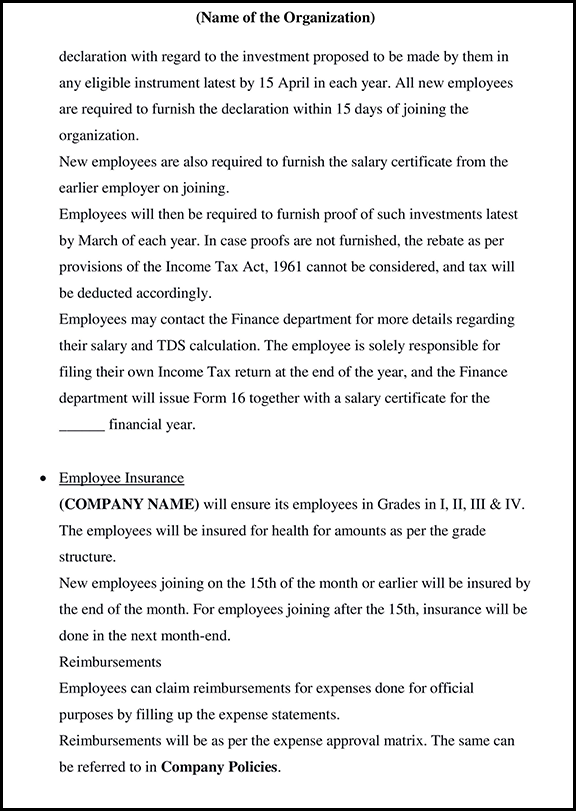
Employee Grievance Policy
Employee Grievance Policy
What is a Grievance Procedure?
An employee grievance policy states the correct process through which any employee can file a complaint regarding their workplace, coworkers, or manager or about a conflict or any other issue regarding the workplace, such as unsatisfactory working conditions. Every company provides and implements a grievance policy that helps employees follow the proper protocol and address their concerns.
The procedure for employee grievance policy typically involves an employee raising a formal complaint through a defined process, such as with their supervisor or HR, followed by a series of steps, including investigation and resolution, to address the issue and provide a fair and transparent process for resolving workplace issues.
StartupHR Toolkit helps you to create grievance policies easily. Also, you can download other HR policies to protect your organization. The Toolkit offers a range of features, from employee onboarding to the exit process, that can help startups save time and money. Additionally, it helps you customize policies and HR documents according to your requirements.
Reasons Behind a Grievance Policy
1. Harassment of an employee is of multiple sorts, from mental, sexual, personal, verbal, and more
2. A situation where their health and safety have been compromised.
3. Unacceptable working conditions result in poor relationships with the manager and an unsafe working environment.
4. Their employee agreement has been changed to unfair terms.
5. The organization has violated the employment policy guidelines.
How to Follow the Grievance Policy Procedure?
1. Deal with the matter informally
You can informally deal with the issues related to grievances if you feel comfortable. Reaching the specific person and letting them know their particular behavior is causing a problem. The problem can be of any cause, like their behavior could be discriminatory, unfair, offensive, etc. This person could be completely unaware of the situation they are causing, and by telling them, you are giving them a chance to right their wrong.
2. Speak to your manager
If you are uncomfortable talking to the person with whom the problem is related, you can directly reach out to your manager. After having a conversation with your manager, he will be able to provide you with different options. Once your manager has heard about your situation, he will directly approach the person responsible for the particular situation. There is formal action that can take against the person, but these actions will entirely depend on your approval.
3. Make a formal complaint
The third option is to write or compose a formal complaint against the person you want to complain for. You can register a complaint against your manager or any other senior person in your firm. The written complaint should mention the particular incident and person regarding the complaint, the date and time of the incident, witnesses, and at last, your signature and the date.
Possible Outcomes
After conducting an investigation, if it reveals that your complaint is credible, there are various actions that a company can take against an employee. For example, the person against whom the complaint is filed can be asked to write an apology, be given a written or verbal warning, get a transfer, or get demoted; it can also result in the employee’s termination.
There will be relevant training and development practices if the complaint is inconclusive because of a lack of evidence. It depends on the severity of the situation. You might face disciplinary action up to termination if it is found out that the complaint is entirely false or is brought up obnoxiously.
Other appropriate measures include counseling, a formal warning, transfer, demotion, or disciplinary action, including termination of employment.
If you are not happy with the Outcome?
If you are unhappy with how your complaint is handling, you can file a complaint with an independent agency. Additionally, you can pursue other options in court. For example, you should see a union representative or attorney if the situation calls for it.
Use Case of Employee Grievance Policy
Employee grievance policy is an essential part of any organization. It helps you to file a complaint about conflicts or issues at the workplace. With the help of employee grievance procedures, both parties can come to a conclusion that will benefit both the company and the employee. In addition, with the employee grievance procedure, there is complete transparency between the organization and the employees, which helps create a safe environment in the workplace.
With the help of the Employee grievance policy, Employees feel that the company actively listening voices, and their issues will resolve.
Grievance Policy Template
[Your Organization’s Name]
Grievance Policy
Introduction
[Your Organization’s Name] is committed to maintaining a work environment free from discrimination, harassment, and any form of unfair treatment. It is important to treat employees in a respectful and dignified manner, and any actions or conduct that do not meet this standard will not be accepted.
Purpose
This Grievance Policy aims to provide a clear and transparent process for employees to raise any concerns or grievances related to their employment. This policy is designed to assure that all grievances are handled promptly, fairly, and in a confidential manner.
Scope
It covers grievances related to any aspect of employment, including but not limited to discrimination, harassment, bullying, performance management, pay and benefits, working conditions, and health and safety.
Policy
1. Informal Resolution
Encourage employees to raise concerns or grievances with their immediate supervisor or manager. The employee should explain the situation and seek a resolution calmly and respectfully. They will listen to the employee’s concerns and work with them to find a mutually acceptable solution.
2. Formal Resolution
Suppose an employee cannot resolve their grievance through informal means or feels uncomfortable approaching their supervisor or manager. In that case, they may submit a formal grievance in writing to the Human Resources Department.
3. Investigation
Once a formal grievance has been submitted, the Human Resources Department will investigate the matter. Conduct an investigation in a fair, impartial, and confidential manner.
4. Outcome
The Human Resources Department will provide a written response to the employee outlining the outcome of the investigation and any remedial action that will be taken, if necessary.
5. Appeal
If the employee is not pleased with the outcome of the investigation, they may appeal the decision by submitting a written appeal to the Human Resources Department. The appeal should provide a clear and concise explanation of why the employee disagrees with the outcome of the investigation. The request will be reviewed by an independent reviewer who was not involved in the initial investigation.
6. Confidentiality
Treat all grievances and their related investigations with the utmost confidentiality. Only inform individuals directly involved in the grievance investigation and its outcome.
Download Full Version
Created by India’s top HR experts
Just Rs. 999 Rs. 499
How To Use?
Fill In The Blanks
 Customize Template
Customize Template
 Save, Print, Done.
Save, Print, Done.

Download Employee Grievance Policy.
→ Editable in MS Word & Google Docs
→ Full Version
→ Created by India’s Top HR Experts
→ Used by HR professionals at Dream11, Razorpay, Tata 1mg, Mamaerath & 50k+
Rs. 999 Rs. 499
Download StartupHR Toolkit Instantly & Access Largest Collection HR Documents.
The only Toolkit to solve all your HR problems in minutes.
Legally compliant and govt approved HR documents.
24×7 customer support over chat & calls (during daytime).
FREE HR audit.
Up to date documents as per the latest Statutory Law.
3 FREE customized documents with Gold Plan.
Expert HR guidance.
Join a Community of 1,00,000+ HR Professionals



